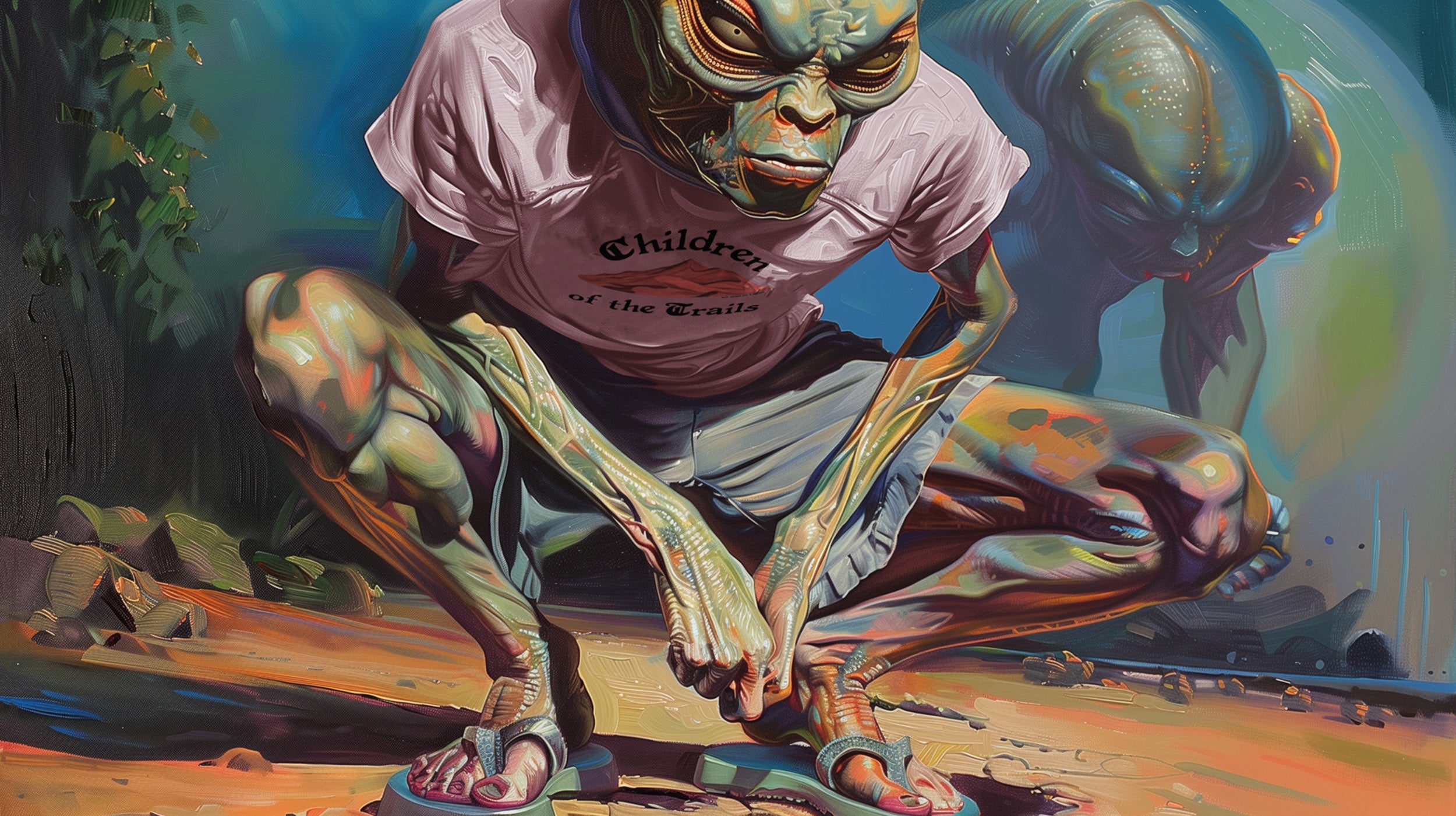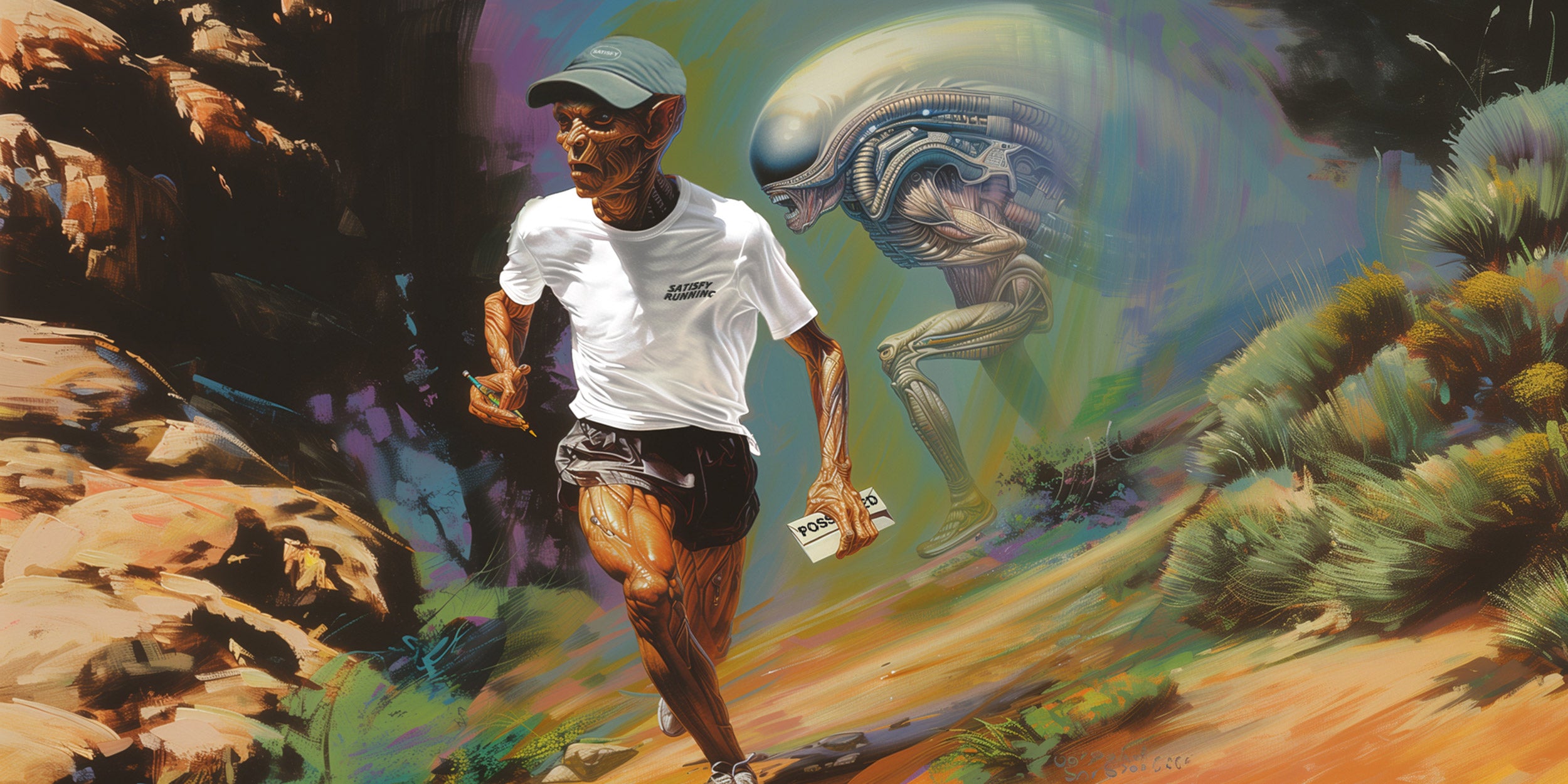
WHAT IS THE RUNNER'S HIGH?
Hello, POSSESSED. My name is Ross-Ross-Ross, and I come from the planet SWEEPS-11, the furthest of the 5,521 known planets outside your solar system. No shit. Can you tell me what the runner's high is? Is it real, and do you encounter 'Machine Elves' as described by ethnobotanist Terrence McKenna?
Love,
Ross-Ross-Ross
Thanks for your question, Ross-Ross-Ross!
Unfortunately, the Runner's High does not include Machine Elves. It would be cool if it did, but it doesn't. There's no hallucinating or interdimensional travel to be had with the Runner's High. It's also nothing like marijuana or LSD or heroin, and it's poles apart from huffing solvents through a brown paper bag under a bridge. The Runner's High is a clear, clean, euphoric state that occurs after and/or during a run. It is as elusive as it is pleasurable, and it can only be experienced through the act of running.
Most runners only ever experience the Runner's High after running for a very long time, at least 20 kilometers in some cases. Other people can run 5 kilometers and get a buzz, but for most runners, it's the longer runs that trigger the high, and the theory behind why it happens is actually super interesting.
Human beings (tramps like us) are born to run. Our bodies have evolved over eons to chase things and eat them. Before there was Sonic Drive-In, ye olde humans would pursue food (prey) on foot for days, and the chemicals released in the brain to create the Runner's High would make the experience of running forever to catch an antediluvian rabbit much less arduous. That's the theory. It's like when you smoke pot before cleaning your home: the job becomes less of a burden and more of a terrifically fun experience with the potential for song, dance, and makeshift puppetry. The Runner's High is theoretically like that. It makes something that should be tedious enjoyable. Another benefit of the Runner's High is pain relief. Running for a long time hurts, but the analgesic qualities of the Runner's High dull the pain. So, I guess it's kinda like heroin after all. Let's just say it's exactly like heroin, except you won't have to rob old ladies or do unpleasant things with your mouth to get more of it.
The Runner's High doesn't stop with the release of heroin-like endorphins, though. Recently, scientists discovered that it also stimulates the endocannabinoid system, which is a network of receptors in your body that fire up when you smoke pot. It's common to feel calm, relaxed, and slightly goofy after a long run, and that's your endocannabinoid system activating. So, in a way, I guess the Runner's High is like smoking weed, only it won't make you eat cookie dough while watching Koyaanisqatsi.
Thanks again for your letter, Ross-Ross-Ross, and good luck catching that high!
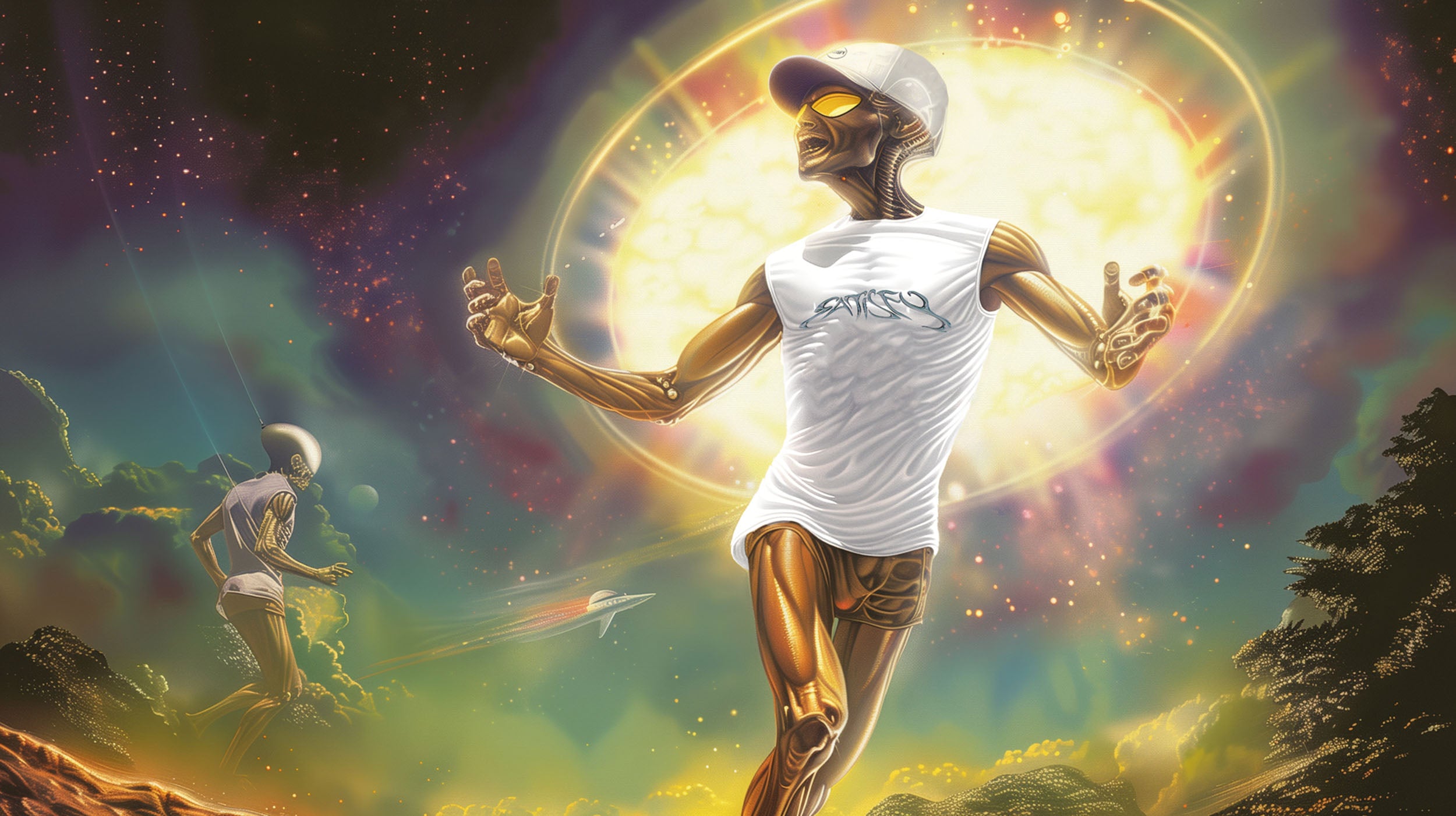
HOW DO HUMANS START RUNNING?
Hello, POSSESSED. My name is Huggy Bubblefoot, and I hail from a disc-shaped planet with a name so fuckin’ dumb I won’t even bother. Here is my question: How do humans start running?
Hugs,
Huggy Bubblefoot
Great question, Huggy, and thanks for your letter. Gosh, where to begin.
As we explained to Ross-Ross-Ross, running is an activity humans are literally designed for. Some humans believe the designer was a dude with a beard named ‘God’; others are convinced the human body was drafted over time by an unhurried process called ‘Evolution.’ Either way, humans are meant to run. However, not all them do.
Having a human body is a bit like having a motorcycle, and if you had a motorcycle, you’d ride it around the place—you would not sit on it and dip churros in pancake batter while watching old episodes of Rick and Morty. Sadly, this is what most humans do. But then some humans have the presence of mind to start the motorcycle up before it shits itself and never starts again.
Now, when a human starts running for the first time, it’s recommended they do it very slowly. While human beings are absolutely running machines, if the machine hasn’t been switched on for a long time, it’ll break. The components must be properly roused and slowly encouraged to work in harmony again. For some humans, this can mean initially walking. There’s no shame in walking. There’s shame in dipping day-old churros in pancake batter but not in walking. Eventually, when it feels right, the walker will run a little. Not too much. Just enough to get a feel for it. Then they’ll attempt to run non-stop for a distance. Then they’ll extend that distance. Then they’ll run faster, then further, then faster, and then they’ll start thinking about buying a pair of Oakley Eye Jackets.
Another thing a human might do when they start running—and perhaps they’ll do this before they set out for their first run—is buy a pair of proper running shoes and establish a running plan. The internet is positively lousy with running plans, but your best bet, my friend Huggy Bubblefoot, is to go for one called a ‘Couch to 5K’. Having the structure of a running plan allows the human runner to safely improve while learning about the basics like warming up, cooling down, and when to shout, ‘Let’s Fuckin’ GO!’ The shoes can be bought at a running shoe store from a person who runs and is very excited that the human customer is going to start running too because they know how much fun it is to run.
Anyway, that’s basically how most humans get into running. You’re welcome, Huggy Bubblefoot.
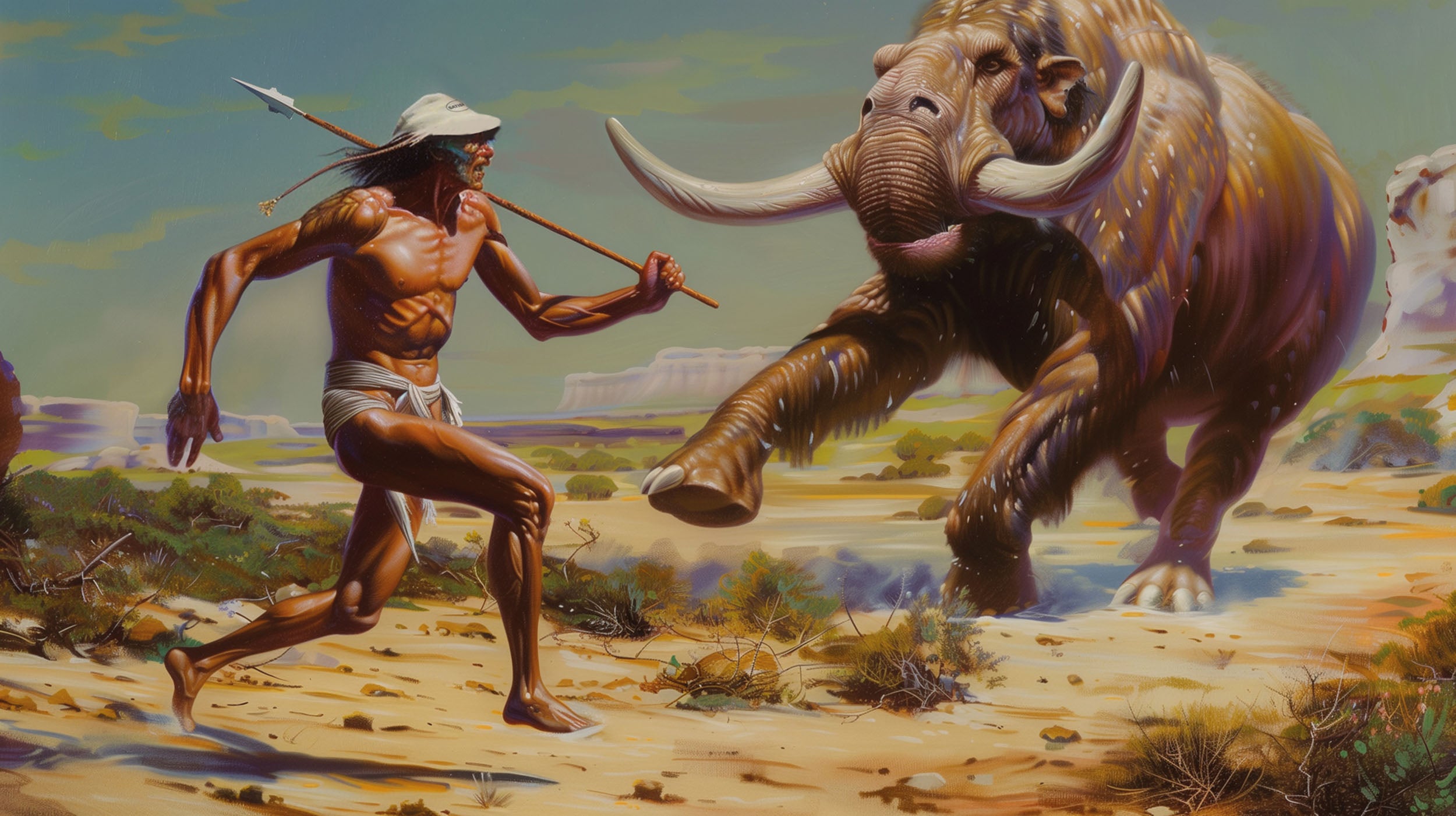
WHAT DOES LSD MEAN?
Dear POSSESSED, My name is Zonk, and I come from Prickstick Nebula 5. Can you tell me what LSD means? Thank you.
Lots of love,
Zonk
Hi Zonk, and thanks for your letter!
LSD is an acronym with two meanings. The most common meaning is Lysergic Acid Diethylamide, which is a powerful hallucinogenic drug people take in order to tolerate a rock band called Phish. The other meaning of LSD is Long Slow Distance, which pertains to running. Let’s do that one.
Inside every human, there is something called the aerobic energy system. This is a system that uses oxygen to produce energy, and LSD runs both activate and aid the development of this system. By running slowly over a long distance, earthlings are able to train their bodies to use oxygen more efficiently, which helps them run for longer periods of time. Building endurance is considered a good thing for earthlings who run because running longer and longer distances is what they want to do. Why? No one knows. They just want to.
LSD runs also metabolize the human body’s fat reserves. For the most part, humans get their energy from carbohydrates (compounds found in cold pizza and expired hotdog buns), but on LSD runs, the body shifts gears and begins using up its fat stores, which scientists in science labs have scientifically proved to improve endurance.
Long Slow Distance runs also encourage muscles, ligaments, tendons, and even bones to strengthen and guard themselves against injury. LSD runs send a message that the body better get used to running for three hours every Sunday because this is how shit is going to be from now on. If an adult earthling ran, say, 20 kilometers without having run further than 200 meters since they were a child, that earthling would definitely die. LSD runs build the structural durability necessary to run enormous distances (for no known reason) injury-free. But the benefits of LSD don’t stop there...
Inside most human skulls there is an organ called the brain. The brain is like a control center that talks to the human, mainly to warn them of danger and encourage them to look at pornography. LSD runs train humans to override this voice to become better athletes. For example, during a run, the brain might say, ‘This sucks. Let’s go lay under that tree.’ But then the human (whose brain it is) will, through force of will, ignore the brain and keep running. ‘Seriously, man,’ the brain might continue, ‘this is bullshit. Let’s go get a burrito and a Dr. Pepper.’ And the human will continue running and perhaps even say out loud, ‘Shut up, brain. I don’t even like Dr. Pepper.’ Psychological resilience is perhaps the most significant benefit of LSD.
The final advantage of LSD running is active recovery. But how can you be both active and recovering? Well, I’m afraid no one knows. Anyway, there you have it. Long Slow Distance running. Bear in mind, LSD isn’t the only practice you’ll need to become a better runner, Zonk (assuming you have legs), but we’ll leave that for another time.
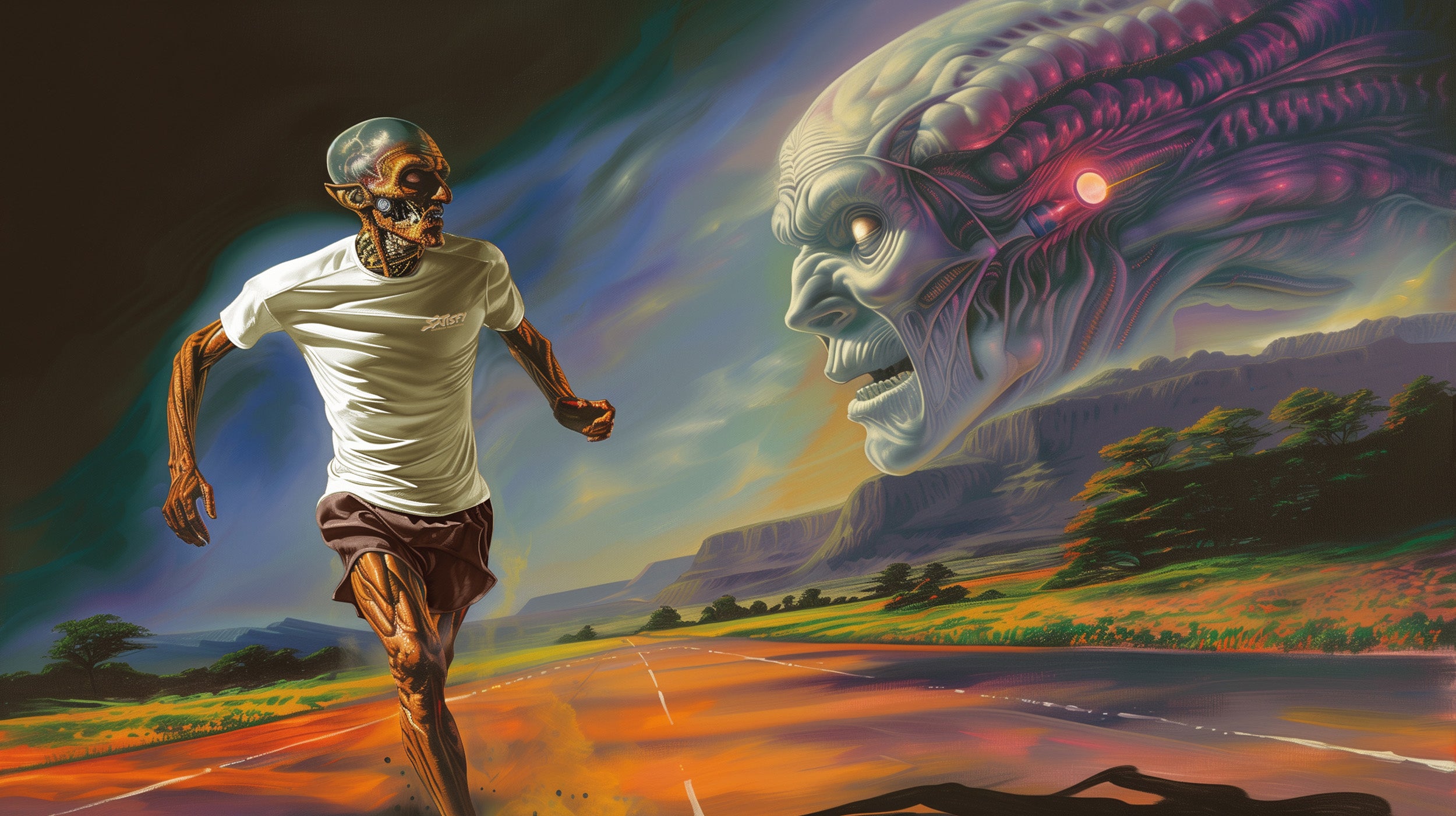
WHAT IS CARB LOADING?
Dear POSSESSED. Hello. I am a sentient gas. I have no name and no planet of origin. I just am, and always have been. To make it easier, though, you can call me Sharon. My question: What is carb loading?
Cheers,
Sharon
Great question, Sharon. Carb loading—what the heck is that? Well, in its simplest terms, carb loading is a performance strategy that involves eating all the spaghetti before a race.
Sound crazy? It is. It’s bananas. But you have to consume carbohydrates if you want to go the distance. Picture yourself, Sharon, reluctantly crouched at the starting line, the engines pumping and thumping in time, the green light flashes, the flags go up, and you can only run a few meters because you didn’t eat enough spaghetti, you idiot. It’s a little more complicated than that, but that’s kinda it.
Carb loading is the process of consuming carbohydrate-rich foods to boost glycogen levels in the muscles, thereby improving athletic performance. According to the turbo nerds at the National Institute of Health, ‘glycogen particles are broken down, freeing glucose molecules that muscle cells then oxidize through anaerobic and aerobic processes to produce the adenosine triphosphate (ATP) molecules required for muscle contraction.’ Huh? Give it to me straight, Doc! Well, basically, glycogen is how the body stores energy-delivering carbohydrates in human muscles, and the more muscle glycogen content, the longer the athlete will be able to perform at a higher intensity.
The science behind carb loading gets pretty intense at the elite professional level; there’s a lot of mathematics and a lot of measuring out the Cocoa Pops, but for ordinary runners, carb loading can just mean eating lots of toast the day before a big race or a long run. Like, if you know you’re going to be running at pace for 90 minutes or more on Sunday, destroy three trays of lasagne and a bag of bagels on Saturday. It’s pretty easy. For better results come race day, some experts recommend beginning the process two to three days out, but for most people it just means having Papa John’s for breakfast, lunch, and dinner the day before. You can also eat other carb-rich foods like rice, oats, potatoes, shark, Skittles®, cigarettes, and paint.
If you want to be a bit more tactical with your pre-race carb loading, it’s recommended you eat roughly 10 to 12 grams of carbohydrates for every kilogram of You. So, let’s say you weigh 75 kilograms—you’d want to eat somewhere between 750 and 900 grams of carbohydrates. To help put that in perspective, Sharon, 750 grams of carbohydrates is roughly 60 slices of white bread, which works out to somewhere between 3 and 4 loaves... which sounds wrong. Anyway, start noshin’, and let’s GO!

WHY DO SOME HUMANS RUN IN SANDALS?
Hi, POSSESSED. My name is Zolax the Destroyer, and I just kinda float around in space, devouring planets and farting out helium. I have a question about sandals: What are they and why do some humans run in them?
Thanks,
Z the D
Hey Zolax! That’s a terrific two-part question. The first answer: sandals are shoes with the top down. They were originally popularized by an earthling named Jesus a few years ago, but they had a resurgence more recently with the publication of Chris McDougall’s 2009 bestseller Born to Run—which leads us to your second question: why do people run in sandals?
Zolax, I’ll level with you, dude. I have no idea why any human in their right mind would run in a pair of sandals. It just sounds like stubbed toes, grubby feet, and a really bad time. But for the people who do it, it’s a game-changer, apparently (a ‘game-changer’ is a hackneyed human expression; don’t say it). The thinking is (and there might be science to back it up, but who has the time?) running with open-toed, thin-soled, ‘minimalist footwear’ (sandals) can encourage a more natural running gait while strengthening the muscles and tendons in the feet, resulting in less injury and better athletic performance.
But back to Chris McDougall’s book, Born to Run. It’s a nonfiction story about a hidden tribe of seemingly supernatural ultradistance sandal-runners living in the Mexican Copper Canyons. The author adopts their footwear and begins to run better than ever and injury-free. When the book came out, the running world was like, ‘Whaaaaat?’ And many runners followed suit, strapping on huaraches and competing in ultramarathons. Then, a crop of shoe companies cropped up and began offering a crop of minimalist running sandals in various designs, and the rest, as they say, is history. And filthy feet.
Whether running in sandals is terrific or horrific depends on who you talk to. But for humans considering a migration from lovely, soft, comfortable, and perhaps nylon-platted running shoes to sandals (which are essentially goddamn flip-flops), I would say this: take it easy, hippy. Unlike regular running shoes that you break in over a few runs, running sandals will flip the script and break you in over a number of weeks—if not months. Get ready for blisters, shin splints, cracked feet, and other runners heckling you about ‘wearing goddamn flip-flops’ (sorry). On the upside, it must feel fantastic reaching a shallow stream on a trail and running right through it, and there’s probably something to be said for getting dirty feet and being closer to our weird and wonderful planet Earth.
By the way—Welcome to Earth.
